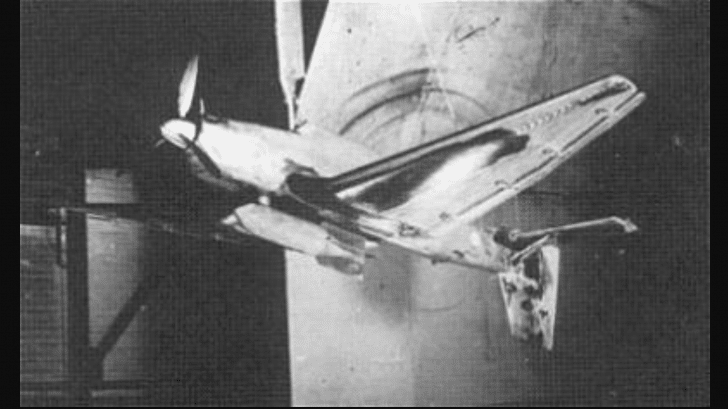The German-designed Junkers Ju 187 was a dive bomber that was designed to replace the Ju 87 Stuka. This would be replacement has a unique design feature- a rotating tail. However, this never came to fruition as it was canceled in 1943.
Here are the ten interesting facts about the Junkers Ju 187:
1. The idea was born out of a tail problem
Nazi Germany wanted to solve the tail problem of their dive bombers. Since this type is typically slower than your standard fighter or interceptor, they’re much more vulnerable to enemy aircraft without extra defensive measures or an escort aircraft.
A second crew member would be behind the pilot with a rear-facing machine gun or cannon. However, this has an obvious flaw- the tail section is their way. Not only it would destruct their vision, but they would technically risk shooting the tail.
2. It had a unique rotating tail design
To solve this problem, Nazi Germany would design a plane that had a vertically rotating tail. This could be moved 180 degrees in flight, which clears the field of fire for the rear gunner.
3. It was an intended replacement for the Ju-87 Stuka
The Ju-87 Stuka was one of the most famous dive-bombers in the era, and the Ju-187 was developed when a new, faster, better-armed, and better-armored replacement was needed.
4. The date that the Ju 187 was designed or conceived is not known
However, considering that it came about as a result of the Battle of Britain, then it is safe to assume that the plane is designed sometime in late 1940, or early 1941.
5. The plane’s new design would keep the most prominent feature of the Stuka
This was the inverted gull wings that conceptually allowed it to have a bigger bomb payload, among other things.
6. It would also bring some much-needed upgrades to the original design
The original Stuka design originally had fixed landing gear that while technologically and mechanically easier to make and maintain, served as two prominent points that would decrease the plane’s overall dynamics.
7. The Ju-187 would also have a retractable landing gear
This is to enhance the plane’s aerodynamics and lead to increased speed and overall performance. The engine would also be an upgrade to the original. The original Jumo 211 with 1200 hp with the Junkers Jumo 213 with 1776 hp.
8. The nose of the 187 would be considerably more droopy than the original Stuka
This second most interesting design change gave pilots a little bit increase in their field of view.
9. The Ju 187’s tail can only be rotated mid-flight
Because of how the wheels and landing gear are located, the tail can only be rotated mid-flight. Since the rear wheel was small and kept the tail low to the ground, rotating the tail on the ground simply wouldn’t work.
10. Sadly, there wouldn’t be a working model made of the 187
In 1943, the 187 projects would be abruptly canceled just as two full-scale mock-ups were in the works. There were two key reasons for this. One is the tail. Having such a unique design feature like this would draw development time to unreasonable levels.
Also, during that time, improvements to the Stuka through variants like the Ju-87D and the Ju-87G would increase their performance to be on par with the expected performance of the 187.



